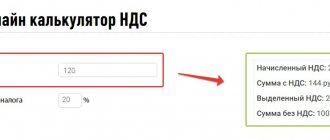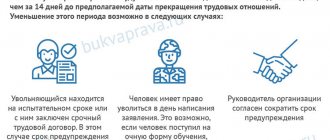Collecting damages from an employee is an unpleasant process. But what to do if, after resigning, the employee left behind broken equipment or categorically refuses to account for the funds previously issued for reporting. The company cannot forgive debts in this case, which means it is necessary to begin to act to resolve this issue.
Our labor dispute lawyer will help you on the issue of collecting material damage from an employee from the beginning of the procedure for a peaceful resolution of a labor conflict to the execution of a court decision to collect money from a negligent employee.
Order to recover damages from an employee
An important factor in obtaining the amount of damage from an employee is the correct drafting of the appropriate order. An error in this document will allow the employee to challenge it in court, as a result of which he will evade responsibility for the harm caused.
Therefore, when issuing an order, it is imperative to clearly and as specifically as possible describe what kind of damage the employee is being held accountable for. For example, you can use links to the inventory number of damaged equipment or details of a document compiled based on the results of the inventory.
The order must also indicate the total amount of damage. That is, the final amount of money withheld from the employee.
Additionally, it should be noted from which income the deduction will be made. Most often, of course, salary in this case. In addition, you need to specify from which month the deduction will occur.
Important : the employee should be familiarized with the issued order against signature and given a copy of the order. If you refuse to familiarize yourself, a corresponding act is drawn up, and a copy is sent by mail with a list of the contents. We remember that according to the current labor legislation, only direct damage can be recovered from an employee; forget about claims for lost profits. Let's look at everything in order with the help of our labor lawyer, who has taken part in more than one trial in this case. The procedure for holding an employee financially liable has a number of features, all of which are discussed in this article.
This will help prove compliance with the legal procedure for collecting damages in a potential lawsuit.
The employer's right to refuse compensation for damages
Article 240 of the Labor Code of the Russian Federation gives the employer the right to release the employee from financial liability. You need to understand that this is the employer’s right, and not his obligation.
In practice, they are usually released if the damage is insignificant, the employee is in a difficult financial situation and has dependent minor children.
Refusal to collect compensation from an employee must be made in writing. This can be done both before the trial and during it.
Deadline for collecting damages from an employee
The law sets a deadline for holding an employee accountable for harm caused. After this period, it will be extremely difficult to force anything from the employee.
Labor legislation defines a one-year period from the moment the existence of harm is discovered. Often the starting point is the inventory results.
The missed deadline can be restored by submitting an appropriate application to the judicial authorities describing the valid reasons for the late response to the damage on the part of the employer.
Determining the deadline for going to court
Expert opinion
Kurtov Mikhail Sergeevich
Practitioner lawyer with 15 years of experience. Specializes in civil and family law. Author of dozens of articles on legal topics.
Art. 392 of the Labor Code of the Russian Federation gives the employer the right to go to court within a year from the date of discovery of the damage.
The date of its discovery is the day the inventory was completed or another day on which the employer discovered the presence of damaged or missing property.
If a voluntary agreement on the payment of compensation was concluded between the employer and the employee, but the employee did not make the next payment and subsequently quit, then the day the one-year period begins to count will be the day of the first missed payment.
This is important to know: Order on additional payment for combining positions: sample 2020
The procedure for compensation by the employer for damage caused by the employee
In every company, a situation may arise when it is necessary to recover material damage from an employee. What points should you pay close attention to?
- Creation of a commission to carry out an official investigation . It must include an accountant, as well as an employee capable of assessing the damage caused in the event of a breakdown of technical devices or equipment. If there is no such specialist in the company, there is an opportunity to attract an outside expert.
- The commission requests an explanation from the guilty employee in writing with delivery of the document against signature. This step is carried out in the same way as in the disciplinary investigation process.
- The commission examines all the documentation and draws up a final conclusion about the employee’s guilt, there is a chance to recover damages from him. Moreover, recovery of material damage caused by an employee may not always be carried out. In the process of this action, the commission must determine as accurately as possible what exactly was damaged or lost, and also determine the amount of costs in monetary terms.
- Determination of the amount of damage caused . This is usually done through an official document from the suspect's boss. It is extremely important to fill out everything correctly here. Then there will be no problems in the future. Sometimes recovery of damage caused by an employee involves at this stage a request from the commission for an expert opinion and its inclusion in the results of the investigation.
- Issuance of an order regarding the withholding of funds from the perpetrator in accordance with the rendered conclusion. If it is impossible to bear such responsibility, no order is drawn up.
- Transferring the completed order to the accounting service , which will withdraw the established funds from the employee’s salary.
- Judicial proceedings in the event of a dispute between the parties . In some cases, established by law, the company is forced to file a claim to recover damages from the employee in court. Such problematic and controversial situations occur in a variety of enterprises and require the most detailed consideration in order to fully understand the essence of the issue. If you need to carry out the procedure for recovering damages from an employee in court, be sure to consult with our experienced labor lawyers who will help you. Don't hesitate to ask any questions you may have. Choose professionals. Then the problem will be solved on time.
Collection procedure
It is possible to recover full material damage from an employee by agreement of the parties or by force. If the amount of damage exceeds the employee’s average monthly salary, and he himself refuses to compensate it voluntarily, then the debt can only be recovered in court under Part 2 of Art. 248 of the Labor Code. The employee himself can go to court if he does not agree with the employer’s demands.
The procedure for collecting full material damage involves going through the following stages:
- The fact of damage, its size and causes are established . For these purposes, the employer may create a special commission under Part 1 of Art. 247 Labor Code.
- The employer demands the employee to provide him with a written explanation of the reasons for the damage (such a demand with the results of the inventory must also be in writing and handed to the employee against signature).
- If the employee refuses to provide an official answer , then a separate report is drawn up regarding this under Part 2 of Art. 247 Labor Code.
- The amount of damage is calculated and brought to the attention of employees.
- Damages are being recovered.
Recovery of damage within the limits of average earnings is made on the basis of an order issued by the employer. It is formed no later than one month from the date the amount of damage caused is determined. The starting point may be the date of the inventory. If the month period is missed, then collection is made only in court under Part 1 of Art. 248 of the Labor Code.
The employer must adhere to the specified procedure for collecting damages, regardless of the voluntary or compulsory procedure for collecting damages. But receiving compensation through the court has certain features.
The procedure for holding an employee financially liable
- Don’t forget to formalize your relationship with the employee correctly. And you, employees, conduct a thorough analysis of the employment contract before concluding it. The legal relationship that will arise between the parties depends on what documents you sign. Regarding this issue, you need to see whether an agreement on full financial responsibility has been concluded with the employee. If there is such an agreement, then you can demand in court full compensation for losses caused by the employee. In the absence of an agreement on full financial liability, you can count on compensation for damage from the employee only in part of his average earnings;
- A difficult issue on this topic can be considered cases where an employee was fired and he filed a claim for reinstatement. The result is counterclaims in which each side proves its arguments by all legal means. The employee’s absenteeism could be of an exceptional nature, and his subsequent dismissal exposes him to the fact of losing his job. In this case, the employee does not hand over the goods entrusted to him by virtue of job descriptions, but files a claim in court. It is possible to carry out an inventory in the absence of an employee, but the procedure becomes much more complicated, so be prepared to spend a lot of time drawing up warehouse inspection documents so that your evidence is not challenged during the trial;
- It is not always the case that one employee is at fault. The work takes place in a team, where everyone plays their role in production or sales. A mistake can be made by a team or the entire workforce. Therefore, punishing one and bringing him to disciplinary liability is not correct. This employee will have the right to appeal a disciplinary sanction, the cancellation of which will have consequences for the case of recovery of damages from the employee (read more about how to appeal a disciplinary sanction at the link);
- very often, employers in these cases blame their subordinates for everything, not paying attention to their own guilt in what happened. Thus, savings on safety and security can lead to losses of goods or raw materials, which is the fault of the employer himself, who did not provide conditions for storing the property entrusted to the employee;
- The circumstances of the amount of damage to be recovered are also controversial. An analysis of judicial practice shows that the employer made mistakes when determining the amount of his claims in these lawsuits;
- Do not forget that there are exceptions to the rule of collecting damages from the employee. You cannot claim damages when acts of force majeure occurred. An earthquake or flood causing harm is the basis for releasing the employee from liability in this case. Even if, when maintaining personnel records, it is indicated that there is liability in the event of force majeure, this will not apply in court, all clauses of the employment contract that contradict the current labor legislation are void;
- always analyze the situation for a crime. Our criminal lawyer will help you figure this out and, if necessary, begin collecting the deficiency from the financially responsible person. If a criminal case has been initiated, there is every reason for full compensation for losses, even in the absence of any written agreements. The employee’s reference to the absence of an agreement on full financial liability in defending his interests will not serve as a basis for releasing him from civil and criminal liability.
Contact us for legal assistance and we will sort out your problem. Our labor lawyers will both defend an employer in a case of recovery of damages from an employee, and will defend an employee who is being sued with unreasonable demands.
ATTENTION: watch the video on the topic of protecting the labor rights of an employee, and also subscribe to our YouTube channel to be able to receive free online legal advice through comments on the video.
What mistakes do employers make?
Expert opinion
Kurtov Mikhail Sergeevich
Practitioner lawyer with 15 years of experience. Specializes in civil and family law. Author of dozens of articles on legal topics.
Employers often try to speed up compensation for damage caused by an employee, which leads to a violation of the procedure. The most common mistakes are:
- When an employer tries to withhold damage caused by an employee from his salary, without his consent and exceeding the amount of the average income of the subordinate;
Correctly: the employer must form a commission, determine the amount of damage, require the employee to draw up an explanatory note, and then obtain his consent to compensate for material damage on a voluntary basis.
- If the employer conducted a commission, established the amount of damage caused, but delayed the actual collection process for more than thirty days;
Correctly: after establishing the amount of damage, the employer must draw up an order on the direct collection procedure within thirty days. If this period is overdue, then you need to go to court;
- If the employer tries to withhold an additional amount for causing material damage, based on the fact that because of it he suffered additional material losses;
So, for example, if a taxi driver crashes his car, then, in theory, he should only pay the amount of costs that will go towards repairing the car. His boss may demand additional financial compensation for downtime of a company vehicle under repair and lost income. However, according to the Law, an employer cannot demand money for “probability”.
- The employer did not check the property of the uniform before hiring a new employee, and then blamed him for the shortage, etc. The fact that the employee caused the shortage must be proven by an eyewitness, and if there is none, then trying to prove “speculation” is considered an illegal action;
- The employee is withheld the amount for material damage caused to the employer without proof of guilt.
How to do it right: the employer must organize a commission, demand an explanatory statement from the employee, study all the pros and cons of the need to compensate for material damage and, only after that, collect the required amount.
- The employee was not required to write a written explanation. The employer anticipated the events and decided to recover damages after the fact.
Correctly: the employer must have a written request to the employee asking him to write an explanation of what happened that resulted in moral damage. If the employee refuses to write the required document, then the employer must record this fact by taking a written refusal from the employee and securing it in the appropriate act.
- If the employer requires the employee to pay material damage that exceeds the latter’s average monthly income, despite the fact that they have not concluded an agreement on liability for compensation for the full amount of material damage caused.
How correct: if there is no contract, then the employer has the right to demand that the subordinate compensate only an amount that does not exceed his average monthly income.
- If the employee calls on the employee to compensate for damages if there is one of the reasons that excludes the possibility of material compensation. These may include: force majeure, work risks, the inability to exclude damage to the employer’s property, etc.;
So, for example, if a harvester in a wheat field was given an order to collect the entire harvest in 20 hours. As a result of continuous operation, the combine broke down. The employee does not have to reimburse the cost of repairing the assembly machine, since the cause of the breakdown is directly related to the work hazard.
- When the employer demands to pay an amount exceeding the employee’s average monthly earnings;
- If the employer demands compensation for material damage later than twelve months from the date of discovery of the damage caused. If this fact is not recorded in any way and it is impossible to establish the exact date of discovery of the damage, then the employer’s actions are illegal.
When the question arises about compensation for damage to the employer by an employee, many questions arise. It is necessary not only to understand the possibility of compensation for losses, but also the extent of the damage.
In addition, the employee may refuse compensation for damages. Covering expenses for the employer, even if the employee quits, depends on the correctness of the paperwork.
Following the correct procedure for registering material damage will be a reliable assistant when going to court.
This is important to know: Non-disclosure agreement for confidential information: sample 2020
Statement of claim for recovery of material damage from an employee
If an employee is fired, the amount of damages can only be recovered from him through the court. Given the strict deadlines for bringing to justice, such an application must be carefully prepared and submitted correctly.
A claim against an employee in this situation is filed only at the place of residence of the defendant. The employee's address must be contained in the employment contract.
It is important to note: in addition to the issue of compensation for harm, the court will check the correctness of the employee’s registration as a whole.
Therefore, in addition to the order to bring to justice, inventory results and other documents confirming the amount of damage caused, copies of all documents regarding the employee should be attached to the claim:
- application for a job
- employment history
- The order of acceptance to work
- employment contract
- job description
- employer's rules of procedure (EPTR)
- staffing table
- if available - orders for other penalties from the employee
- confirmation of employee dismissal
- and so on.
Causing material damage to the employer: how to calculate the amount
An employee can only be compensated for direct actual damage (paragraph 1 of article 238 of the Labor Code of the Russian Federation), which means (paragraph 2 of article 238 of the Labor Code of the Russian Federation, paragraph 15 of PPVS No. 52):
- Physical reduction of the employer's property.
- Decrease in quality and deterioration of the properties of this property.
- Costs or additional payments incurred by the employer aimed at restoring the quality or quantity of property.
- Payments made by the employer in favor of third parties whose property was damaged as a result of the actions of its employee. In this case, all payments made by the employer in favor of third parties to compensate for damage are taken into account. Thus, even if the employer compensated third parties, for example, for moral damage, for the employer himself these costs are direct actual damage and, accordingly, can be recovered from the employee (for example, the decision of the Krasnokutsky District Court of the Saratov Region dated May 30, 2012 in case No. 2 -223(2)/2012).
As a general principle, the amount of damage is calculated on the basis of market prices prevailing in the relevant area on the day the damage occurred. Moreover, it cannot be less than the value of the property according to accounting data, adjusted for its wear and tear (Article 246 of the Labor Code of the Russian Federation). If it is not possible to determine the day when the damage was caused, the amount can be calculated on the day such damage was discovered (paragraph 2, clause 13 of PPVS No. 52).
If property prices have risen or fallen during the trial, the court will not be able to satisfy the employer’s demands to recover damages in an amount greater or less than established on the day the damage was caused (identified) (paragraph 3, clause 13 of PPVS No. 52).
Procedure and features of recovery of damages under collective liability
A collective liability agreement is a type of full liability agreement, so the same requirements apply to them.
Responsibility under such an agreement cannot be divided between all employees who signed it. The courts are based on the fact that such a team acts as a single entity and if there is a shortage, each of the team members must separately prove the absence of their guilt in causing damage to the employer’s property (paragraph 3 of Article 245 of the Labor Code of the Russian Federation).
When resolving such disputes, the court checks the following facts (clause 14 of the PPVS No. 52):
- is it legal to conclude an agreement on collective responsibility in this case;
- whether the employer filed claims against all members of the named team who worked during the period of damage.
If the demands are not presented against all members of the team, the court involves them as third parties who do not make independent claims regarding the subject of the dispute on the defendant’s side, since their testimony can be of great importance for resolving such a dispute.
The admissibility of attracting not all employees who signed the contract does not mean that the employer can thus infringe on the rights of persons against whom he nevertheless made demands. In this case, the distribution of the amount to be compensated is made taking into account all members of the team who worked during the period of damage (for example, the ruling of the Perm Regional Court dated January 27, 2016 in case No. 33-386/2016).
When calculating the amount of compensation, the courts take into account in relation to each employee (paragraph 2, paragraph 14 of PPVS No. 52):
- the degree of his guilt;
- wages;
- actually worked time from the date of the last inventory until the moment of damage.
Determining the amount of damage caused
According to Article 247 of the Code, the employer is obliged to calculate the exact amount of damage, prove its cause and the employee’s guilt. The employer has one month to carry out these actions.
In case of loss or damage to property, damages are recovered in a single amount.
If these actions are committed intentionally, in some cases a special calculation of damage is established (for example, if we are talking about narcotic substances, damage is recovered in a hundredfold amount).
The procedure for compensation for damage includes the need to carry out the following actions:
- conduct an internal audit by creating an internal commission and conducting an inventory;
- take explanations from the employee;
- drawing up a report or conclusion based on the results of the inspection.
Voluntary compensation for harm
When an employee agrees to compensate for harm voluntarily, there is no need to go to court. The parties have the right to reach agreement on the following issues:
- Amount withheld from salary;
- Duration and form of payments (one-time or gradually);
- Payment method (cash, replacement of damaged or stolen property and other options).
Issuance of an order
When an employee is released from compensation for harm in accordance with a management decision, a corresponding order becomes confirmation of this fact. In some cases, the publication of this document is neglected, as a result of which, 12 months after the damage is identified, the funds are written off due to the impossibility of reclaiming them.
Voluntary compensation agreement
When the parties reach a consensus that compensation for material damage by the employee will be carried out voluntarily, the employer and employee sign an agreement.
It must contain the following information:
- Company name;
- Details of the person responsible (indicating the position);
- Information about the employee responsible for collecting funds;
- The fact that both participants agree with all points of the document;
- Amount of damage, method and terms of compensation.
The document is drawn up in 2 copies - one for each party. In some cases, another separate copy is sent to the company’s accounting department.
Maximum amount that can be withheld from wages
The Labor Code clearly states that the amount of deductions cannot be more than the average monthly wage. It also states that a deduction of more than 20% of the amount cannot be made from a worker’s salary. An employer cannot impose a penalty without the employee’s consent. When an employee refuses to sign an agreement on voluntary compensation for harm, deduction from wages can only be made on the basis of a court decision.
Answers to common questions about the procedure for compensation for material damage by an employee
Question No. 1: The employer is trying to recover a sum of money from me for damaging the company’s property, but the amount of compensation turns out to be several times greater than the amount of my salary. Is the employer right?
Answer: It all depends on whether an agreement on full financial liability was concluded between the employee and the employer - on the obligation to compensate for the full amount of damage. If so, the employer has the right to recover the full cost of the damaged or lost property. If not, then you will have to limit yourself to the size of the salary.
Question #2: I am a farmer and my employer has instructed me to finish harvesting urgently due to the upcoming rainy season. The tractor broke down due to continuous operation, do I have to compensate for the material damage?
Answer: No, in this case we are talking about work risk.
Rate the quality of the article. Your opinion is important to us:
Conditions for bringing the guilty employee to financial responsibility
The Labor Code of the Russian Federation defines five conditions under which the employer has the right to demand compensation for damage caused by an employee:
- the damage caused is calculable (actual) and direct;
- the employee’s actions were unlawful;
- there is a cause-and-effect relationship between the action and the resulting consequences;
- the employee is at fault;
- the absence of circumstances that exclude the employee’s liability.
In addition to labor legislation, these conditions are disclosed in Resolution of the Plenum of the Armed Forces of the Russian Federation No. 52.
Forced collection of funds
When pre-trial conflict resolution does not bring any results, the employer is forced to go to court. In this case, compensation for material damage by the employee is made regardless of the type of liability.
Reasons for filing a claim
An employer has the right to go to court if one of the following reasons exists:
- The employee does not want to voluntarily compensate for the damage;
- The amount of damage is greater than the amount of wages, so deduction is impossible;
- Delay in issuing an internal document on the deduction of funds from wages (later than 30 days after completion of the internal investigation);
- The employee refused to pay the balance of the debt after dismissal.
Deadline for filing a claim
The employer has the right to file a claim within 36 months from the date of the incident (if known) or the actual discovery of shortages, damage to property and other consequences. There are situations when it is possible to initiate proceedings later, but in this case, the plaintiff will have to convince the court that the timely filing of the application was not made for a good reason, and there is irrefutable evidence of this.
Stages of trial
Regardless of the reasons for going to court, the amount of the claim and other factors, in order to successfully complete the case, the plaintiff must follow a certain algorithm of actions.
It includes the following steps:
- Drawing up a statement of claim;
- Preparation of the necessary papers (evidence of the employee’s guilt);
- Payment of state duty (receipt should be attached to the claim);
- Sending papers to the court;
- An attempt to reach an agreement with the culprit;
- Presentation of evidence of the defendant’s guilt in court;
- Familiarization with the court decision.
Compensation for material damage by the employee to the employer must be made in whole or in part.
It is important to understand that both parties are interested in a peaceful resolution of the conflict, since in this case they can agree on terms that will satisfy both. Otherwise, the employer will file a lawsuit and the culprit will have to bear even greater expenses.











